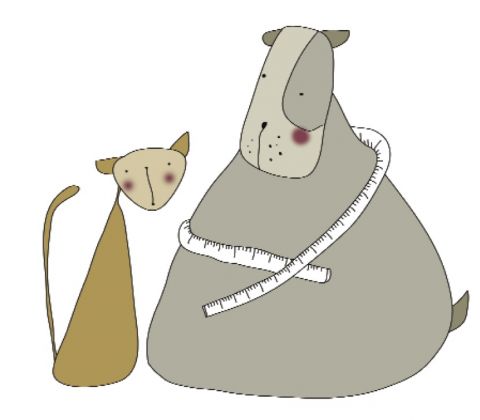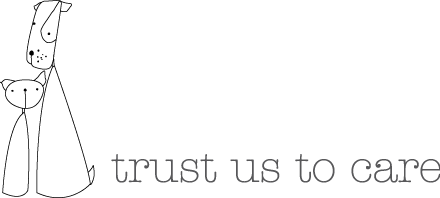Festive Fat? Summer Fit!

Following the excesses of the holiday season, many of us are a little worried about the tightness of our clothes. Obesity is not only a hot topic in the medical and political fields, it is also of great concern in the veterinary world. There is a trend for modern pets, like modern humans, to eat better food and take less exercise than their predecessors.
- Is My Pet Overweight?
It is often difficult for us to see that our own pet is overweight. The weight gain is so gradual that we hardly notice the change. When you are stroking your dog or cat next, run your hand gently over his/her backbone and ribs. In a healthy normal pet you should be able to feel the bones without pressing too hard. If you cannot feel the backbone easily then your pet is overweight.
- My Pet Hardly Eats Anything - How Can It Be Fat?
Many overweight animals do not eat very much. It does not take many calories to keep an animal fat. If your dog, or cat, is overweight it means that they were eating more than they needed, for the amount of exercise taken, at some time earlier in his/ her life. Often obese pets take very little exercise, don’t use up much energy and require very few calories.
- A Fat Pet Is Not A Healthy Pet...
All obese animals are unfit and the extra weight they are carrying puts unnecessary strain on their joints and heart. Obesity makes it more likely that your pet will suffer from some medical conditions, including diabetes, osteoarthritis, cruciate ligament disease, heart disease, liver disease and skin infections.
- How Can I Help My Pet Lose Weight?
There are only two ways to lose weight:
- 1. Increase the amount of energy used, take more exercise
- 2. Reduce the number of calories taken, eat less food.
Increasing exercise should be used in conjunction with a controlled diet. Weight loss should be gradual, over at least 3-4 months. If weight is lost too rapidly it is more likely to be regained at the end of the dieting period.
Some humans manage to lose weight for themselves without any help. Likewise some pet owners succeed to slim their pets on their own. Many of us, however, benefit greatly from support – whether we are trying to lose weight ourselves, or from our pets.
Valley Vets have recognised the serious issues surrounding obesity in our pets and offer all owners a complimentary ‘weight watcher’ clinic.
Please don’t use your pet’s nervousness at the vets as a reason to avoid sorting the problem. The Pentyrch surgery is a calm, quiet premises and may suit some pets more than the busier Veterinary Hospital at Cardiff. The nurses and reception teams are well used to gentle persuasion, using non- slip surfaces and lots of tasty treats, low calorie of course!
The vet team will weigh your pet, calculate how much weight he/she needs to lose and suggest how much food you should be feeding. Once you know your pet’s target weight it is up to you to ensure that they stick to the plan your vet team have devised. If needed, a number of low calorie prescription diets are also available. These work in the same way as human slimming foods and allow your pet to eat a normal meal and feel full, without taking in too many calories.
Once your pet has reached its target weight a celebration is called for, but this is not the end of the road - rather the beginning of a new life. Just as in people, it is common for an obese animal to regain all the weight that has been lost if they return to the previous diet. Sometimes, pets become so much more active once they have lost weight that they may need to go back to a normal diet to provide enough energy for their new found enjoyment of life.
Accept a challenge.... get fit for the summer, together with your pet!





